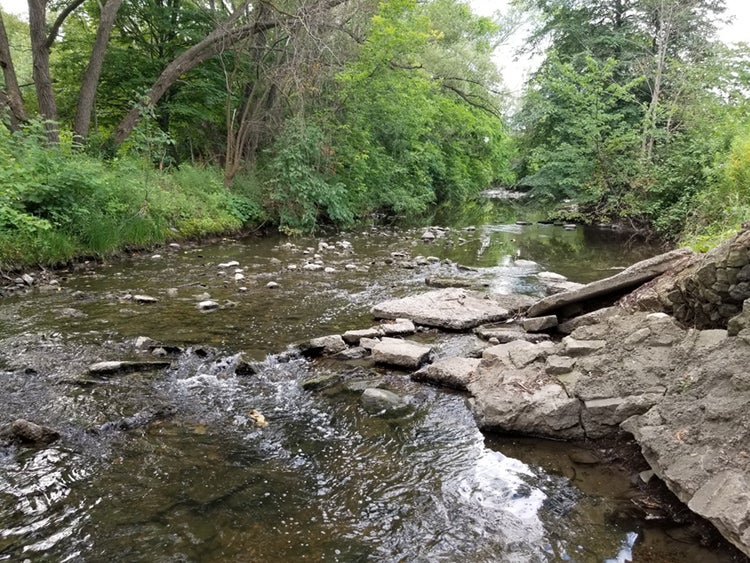U of T study shows winter road salt poses year-round threat to aquatic life in Toronto’s rivers

Published: March 16, 2021
As spring nears, two University of Toronto researchers have found that the salt spread on roads and sidewalks in the Greater Toronto Area during the wintertime remains a threat to aquatic life in the city’s rivers during the warmer months.
PhD student Lauren Lawson and Donald Jackson, a professor of aquatic ecology in the department of ecology and evolutionary biology, in the Faculty of Arts & Science, say heavy salting – including by businesses and private citizens, who the researchers say tend to salt excessively – is having a year-round impact on aquatic life.
They reported their findings in a paper published recently in the journal FACETS.
“Our research shows that chloride pollution from road salt is a year-round threat to our urban freshwater ecosystems,” says Jackson. “Of the samples we took from four GTA rivers and creeks during the summer, we found that nearly 90 per cent exceeded federal guidelines for long-term exposure of aquatic life to chloride.”
In northern temperate regions like North America, the primary non-natural or anthropogenic source of salinization is road de-icing and anti-icing agents applied to highways, streets and sidewalks. In cities – where road density is highest – this results in high concentrations of chloride in runoff flowing into urban waterways.
Lawson and Jackson estimate that more than one-third of the sites sampled had concentrations that would be lethal, according to government guidelines, to two-thirds of aquatic species – and possibly more given species’ greater sensitivity while in early stages of development during the summer. The concentrations discovered may also negatively affect reproduction and spawning.
“Increased chloride concentrations in freshwater can be toxic and lead to changes in an organism’s behavior and ability to withstand other stressors,” says Lawson. “It can increase lethality, alter food webs and lead to biotic homogenization where only hardier species survive.”
The researchers measured the concentration at 214 sites along four GTA waterways: the Humber and Don rivers, as well as Mimico and Etobicoke creeks. The sites ranged from the headwaters north and northwest of the city to where they enter Lake Ontario in Toronto.

A location on Mimico Creek where U of T researchers sampled water to measure chloride from road salt (photo by Donald Jackson)
Samples were collected in July and the first two weeks of August when chloride concentrations are typically at their lowest level. Concentrations are expected to be higher during the preceding winter months when road salt is actively applied to roadways and sidewalks.
The U.S. and Canada annually use roughly 24.5 and seven million tonnes of road salt respectively in both commercial and industrial applications, as well as to de-ice sidewalks of small businesses and homes. Toronto alone uses 130 thousand tonnes of road salt each year – an amount equal to the weight of the CN Tower.
As the co-authors point out, Toronto has a salt management plan that includes the use of more effective brine instead of salt, as well as technology designed to optimize spreading and reduce use.
But, Lawson and Jackson say, there is more work to be done.
For example, the researchers say private citizens often use excessive amounts of salt and spread it in an inefficient manner. Also, salt use at transit stops is unregulated, which can result in less than optimal application.
“We need private citizen education – including for businesses – on the proper amount and application of road salt,” says Jackson. “A little salt goes a long way when applied correctly.”
Given their findings, the authors recommend research to better inform revisions to current federal guidelines. In particular, they suggest a focus on site-specific biological communities and increased attention to the year-long impact road salt has on urban ecosystems.
“Ultimately, it is critical to track changing environmental quality as the constant urbanization of Toronto changes land-cover,” says Lawson.
“Tracking environmental change will provide evidence for the need for sustainable management and city-development in an increasingly concrete world.”
The research was supported by the Natural Sciences and Engineering Research Council of Canada.



